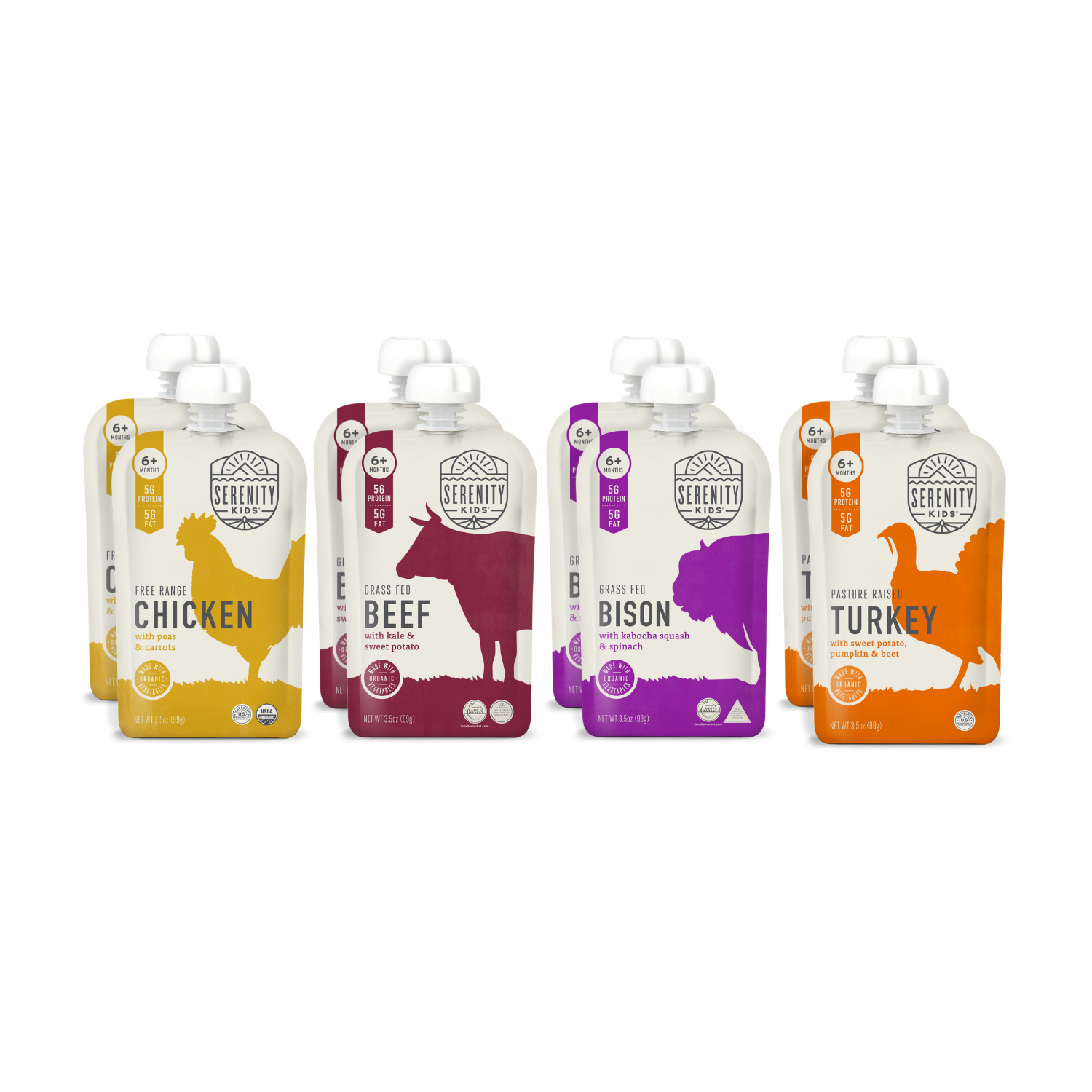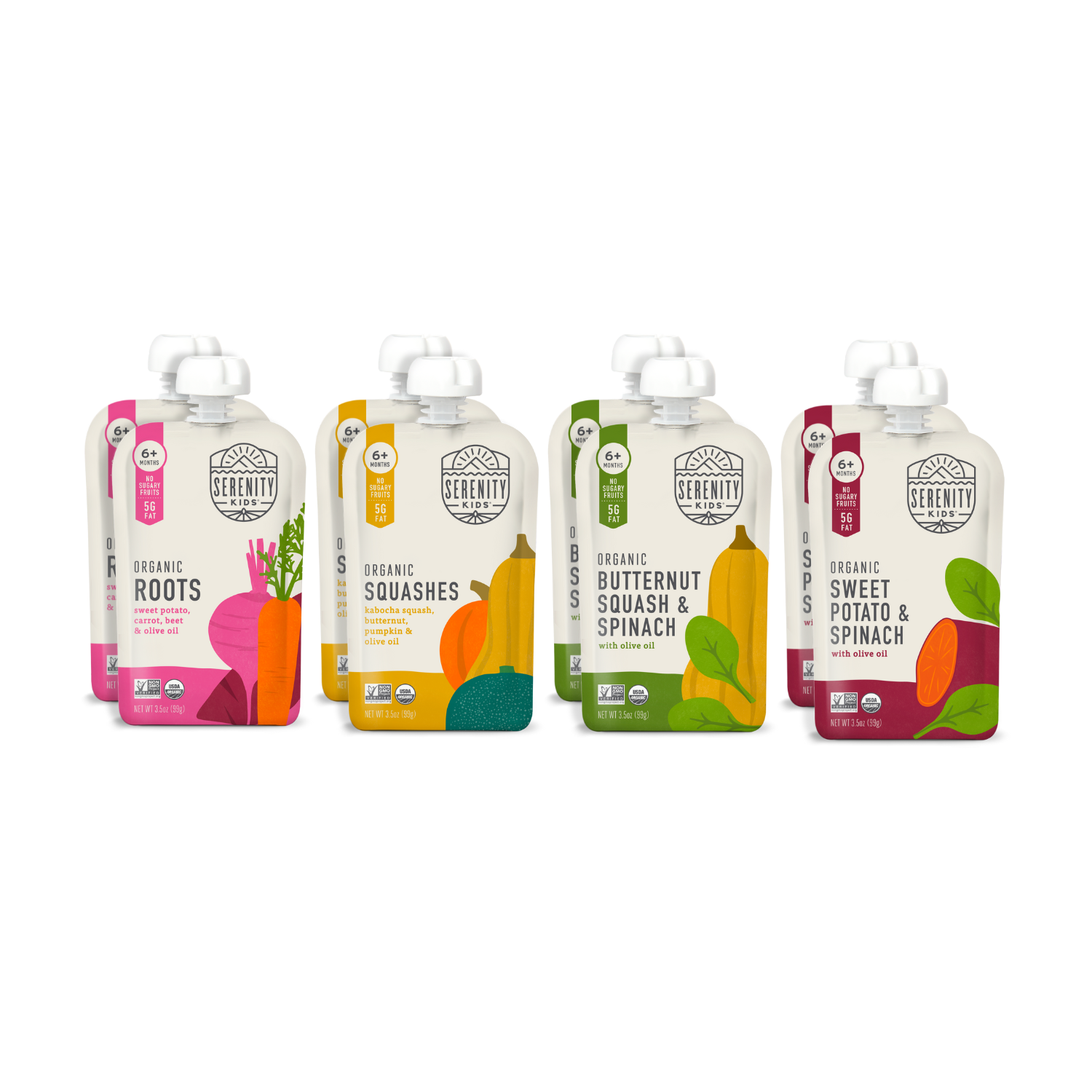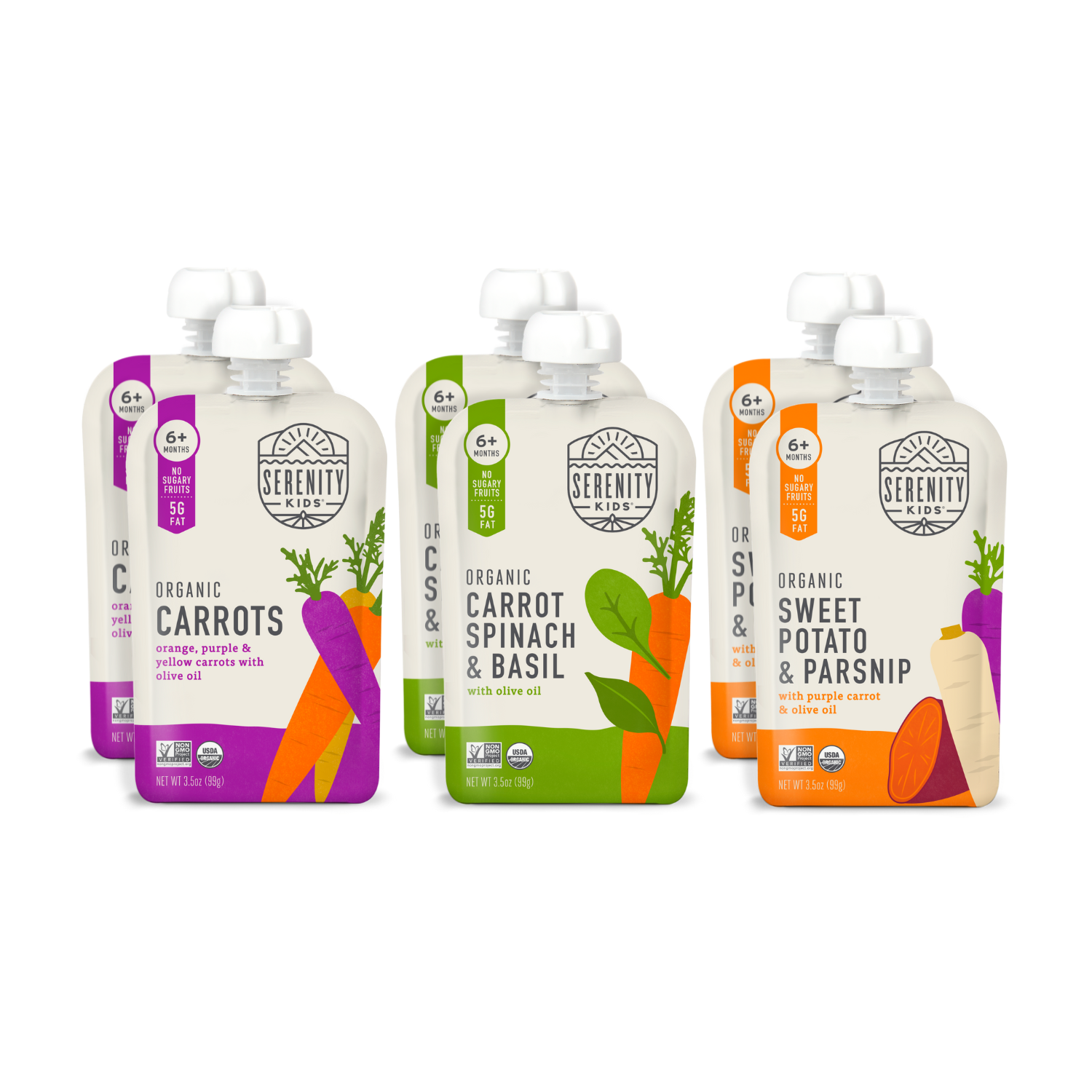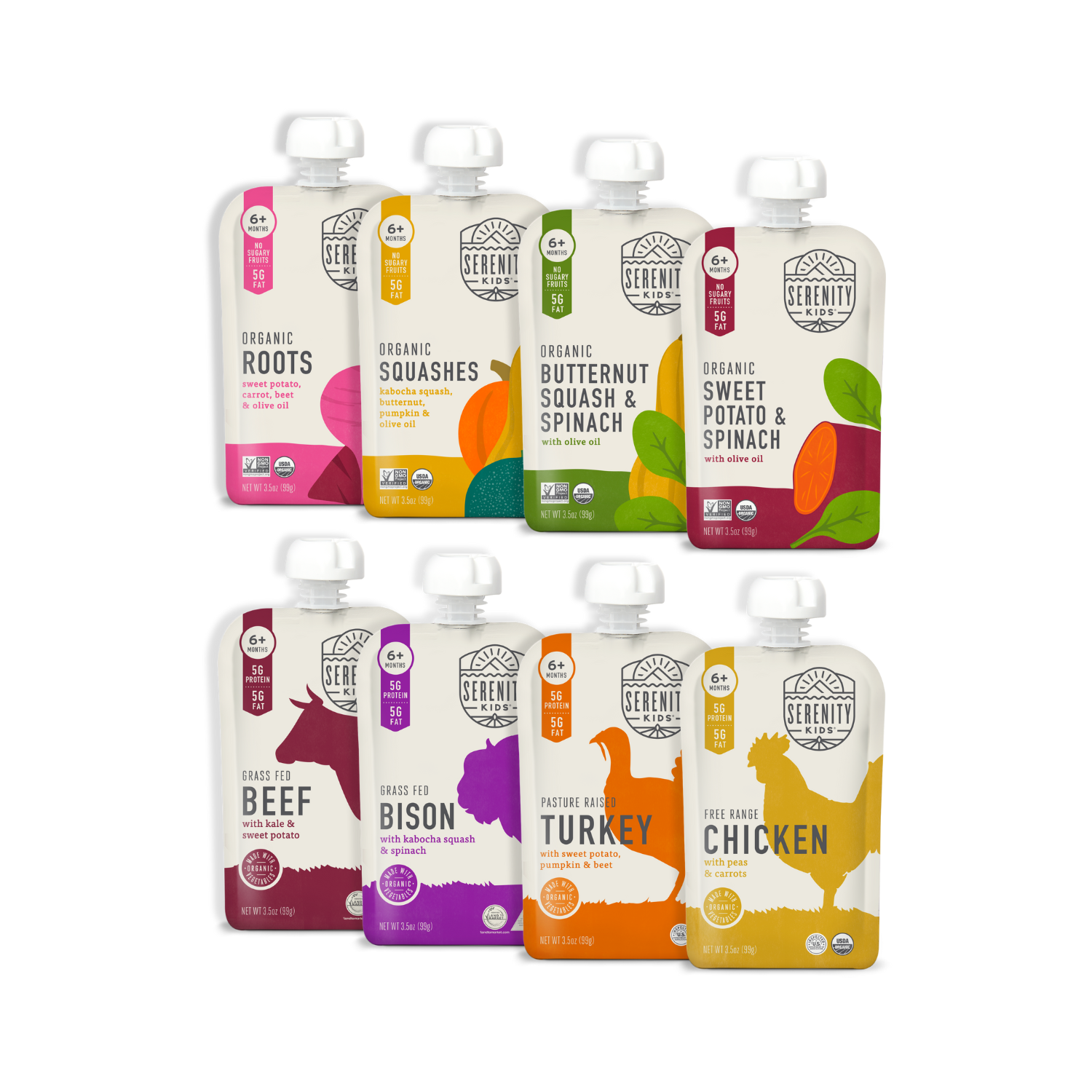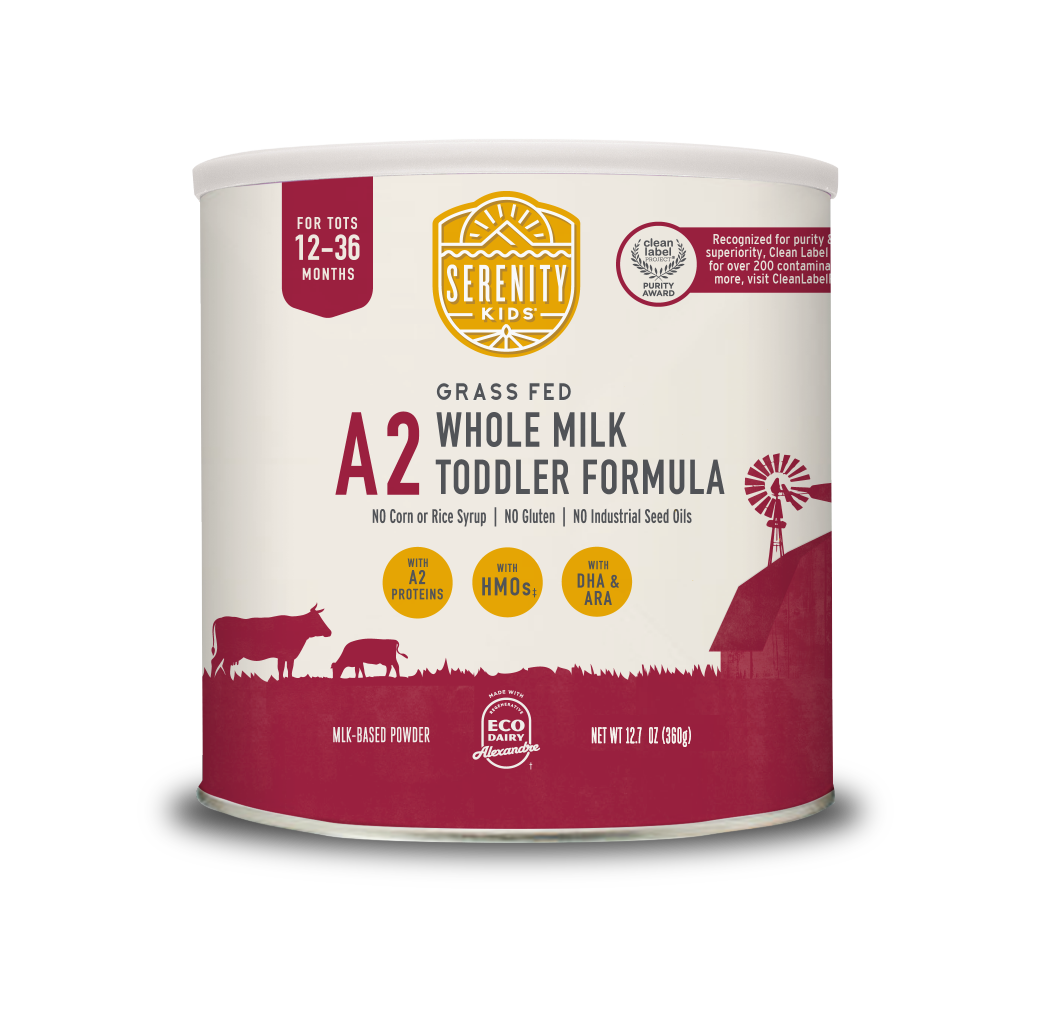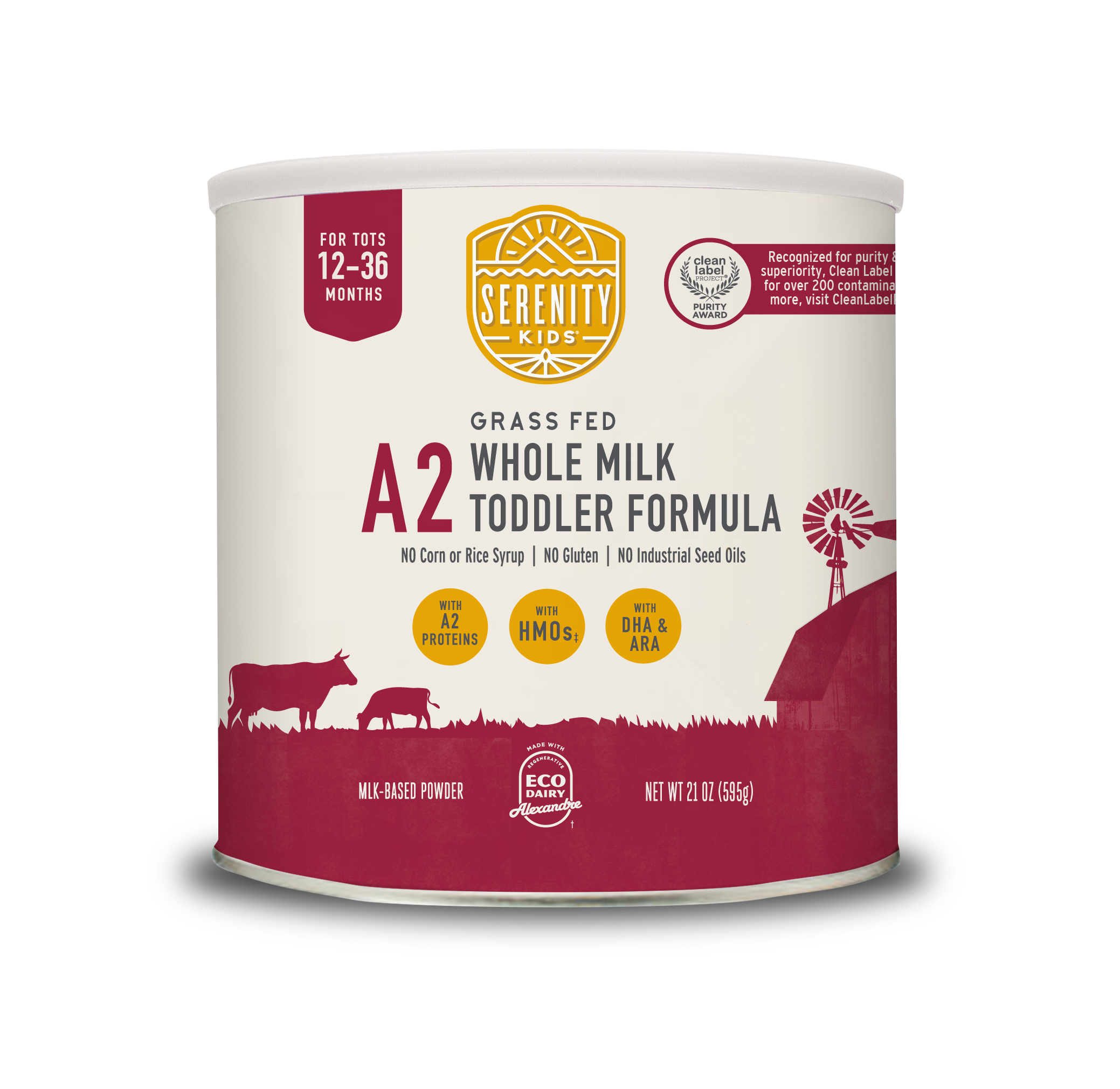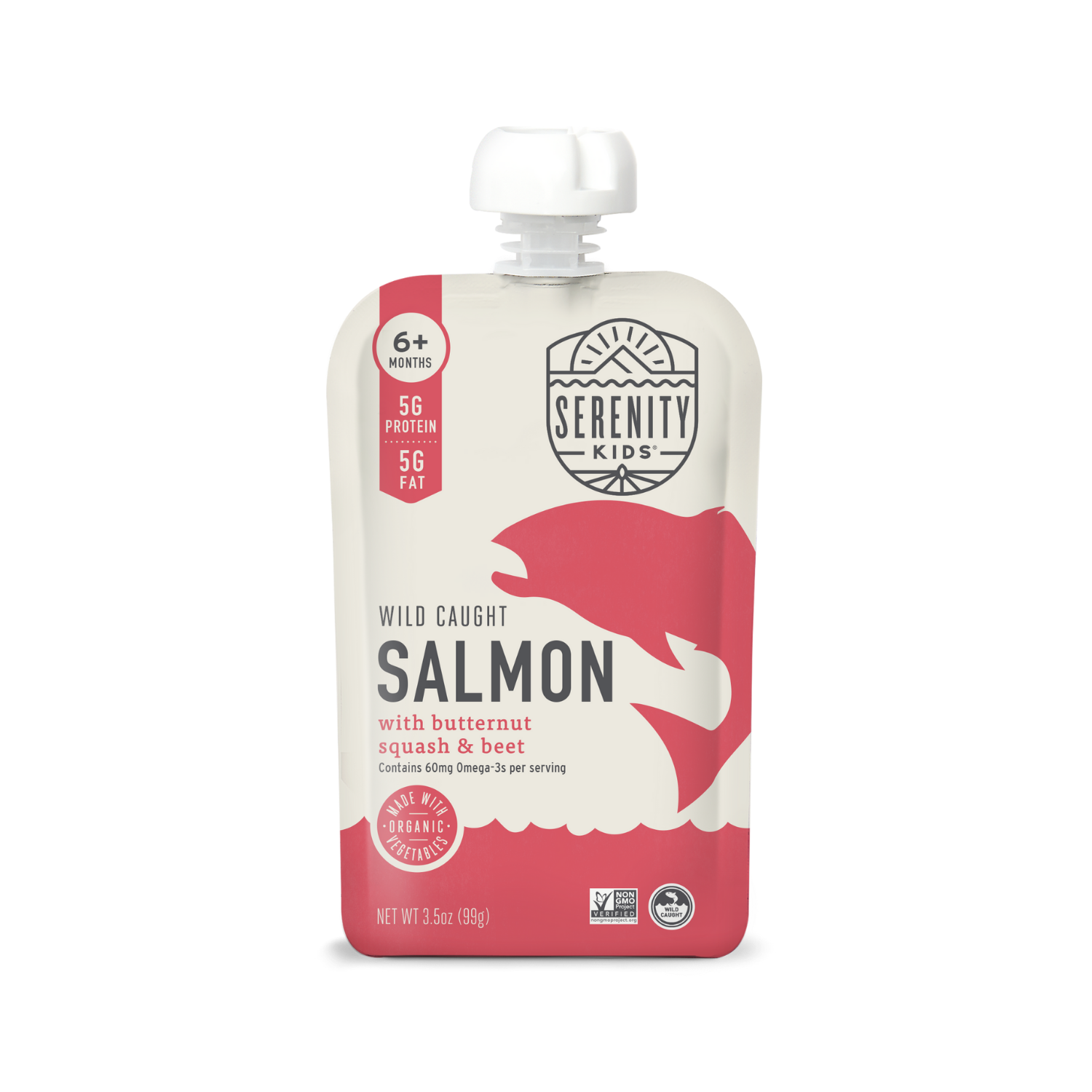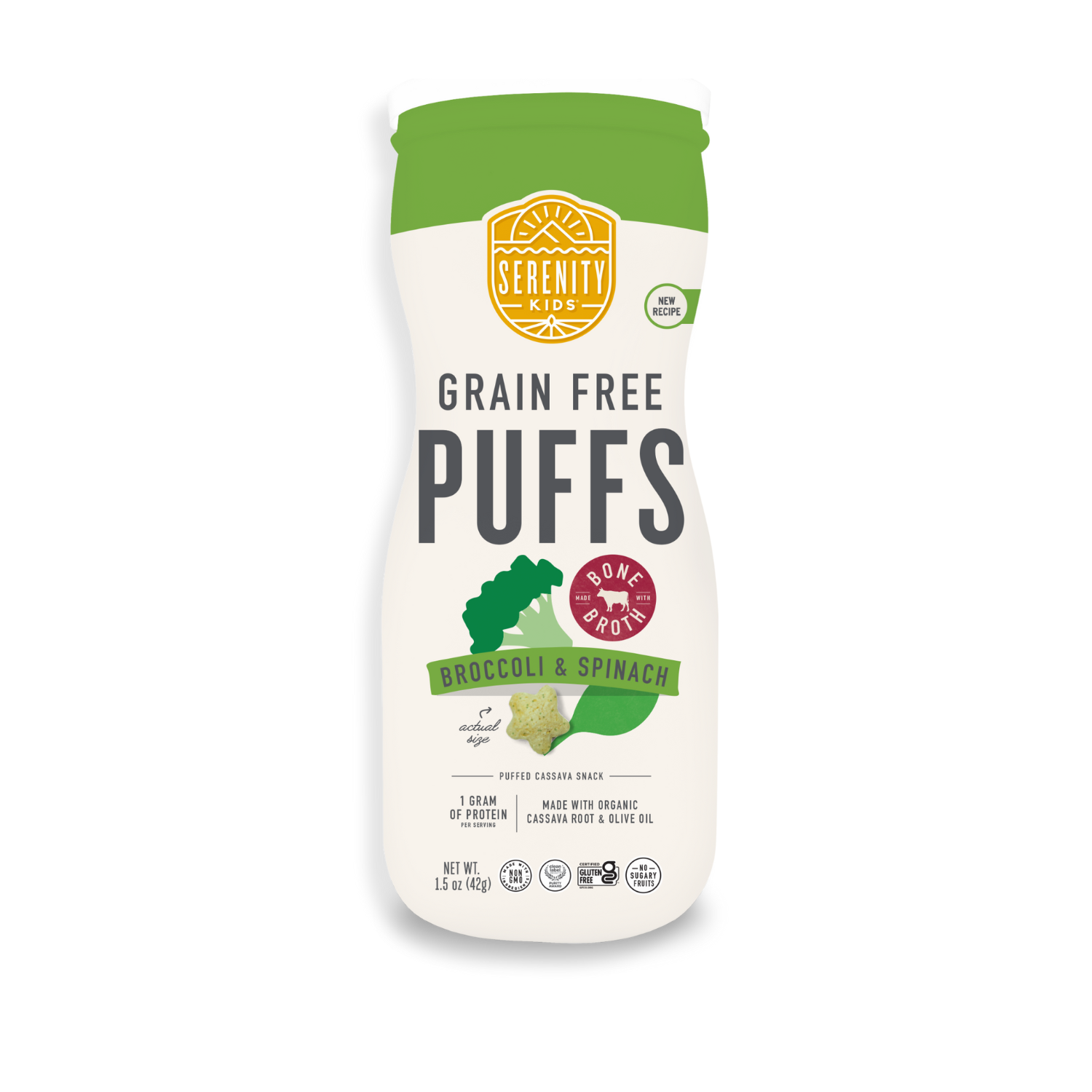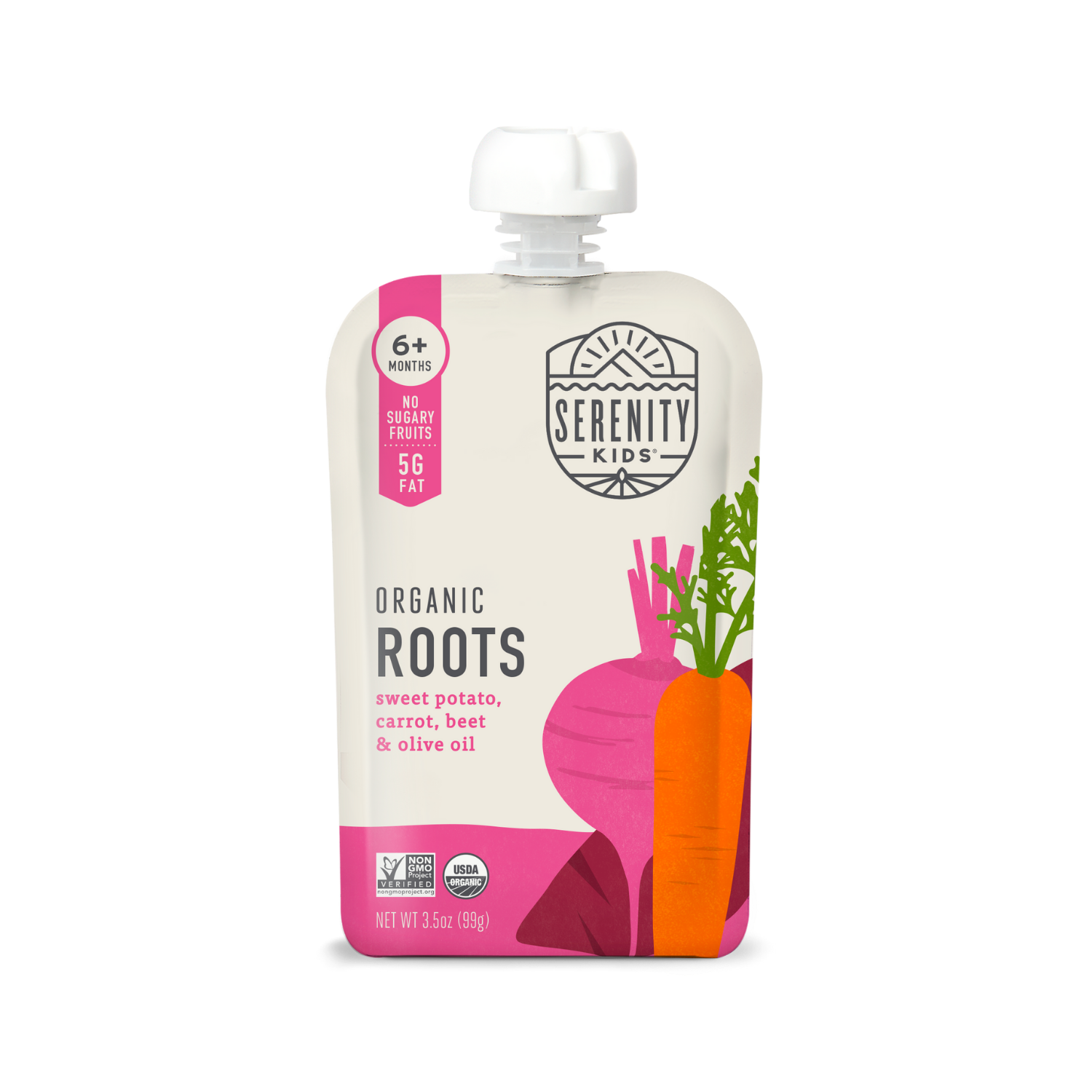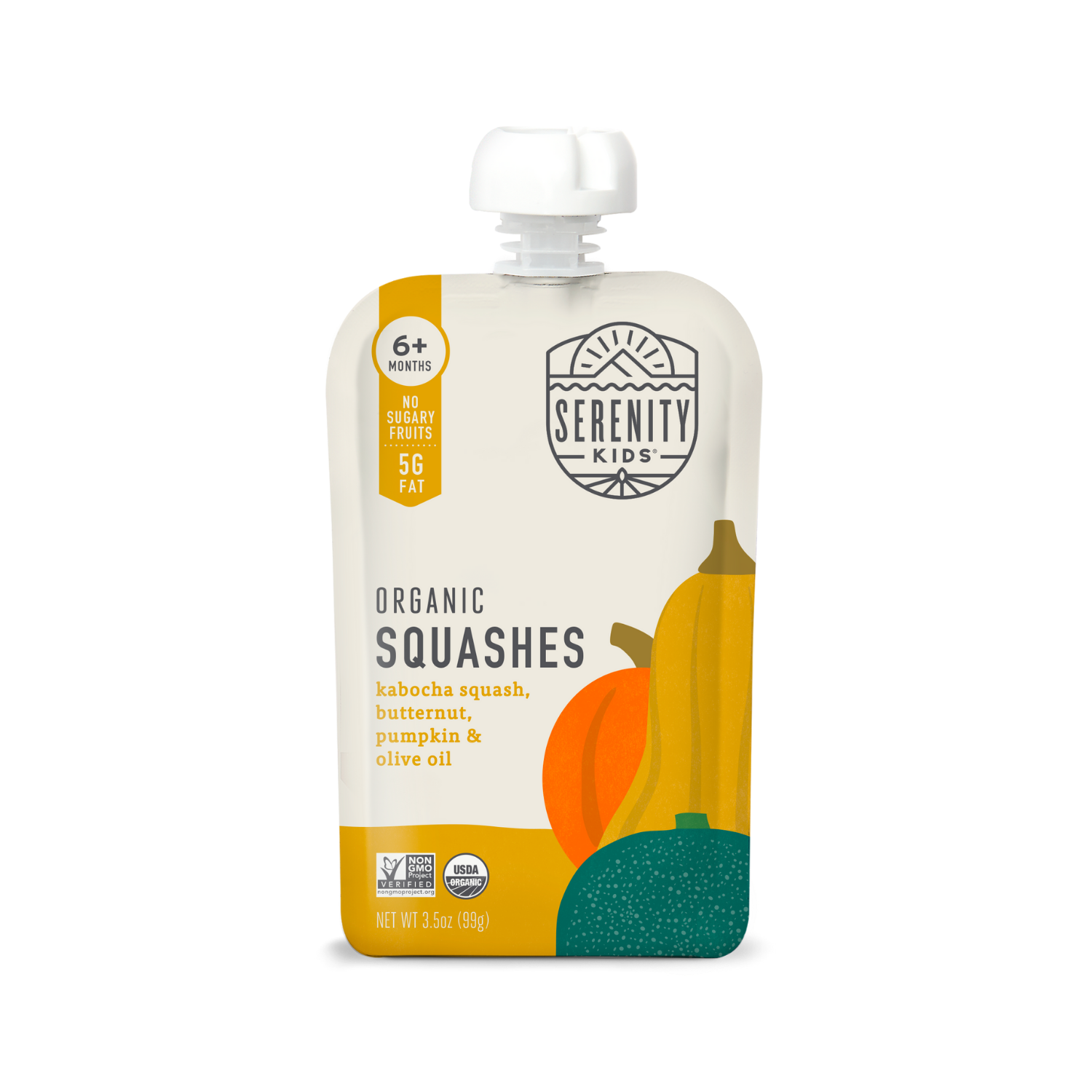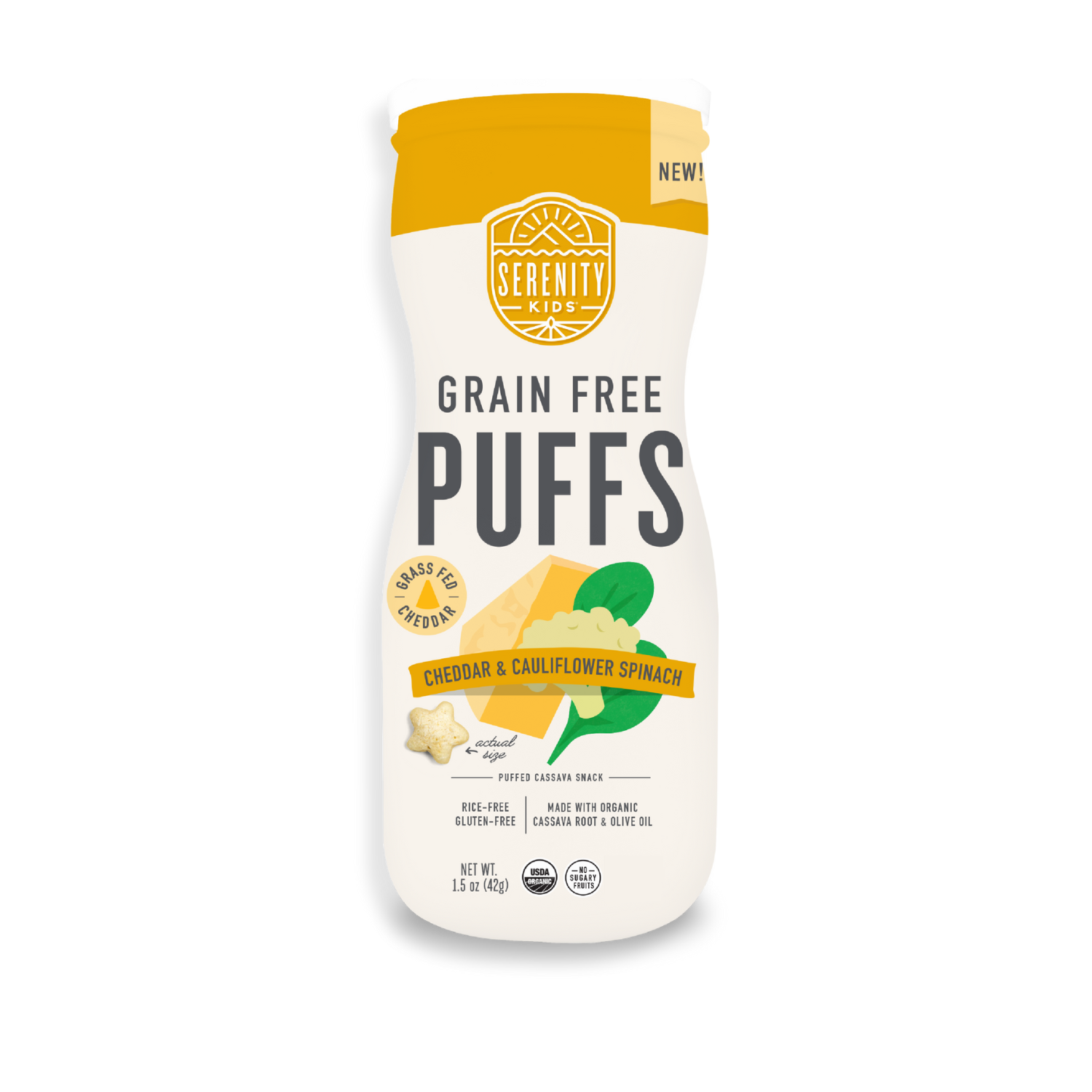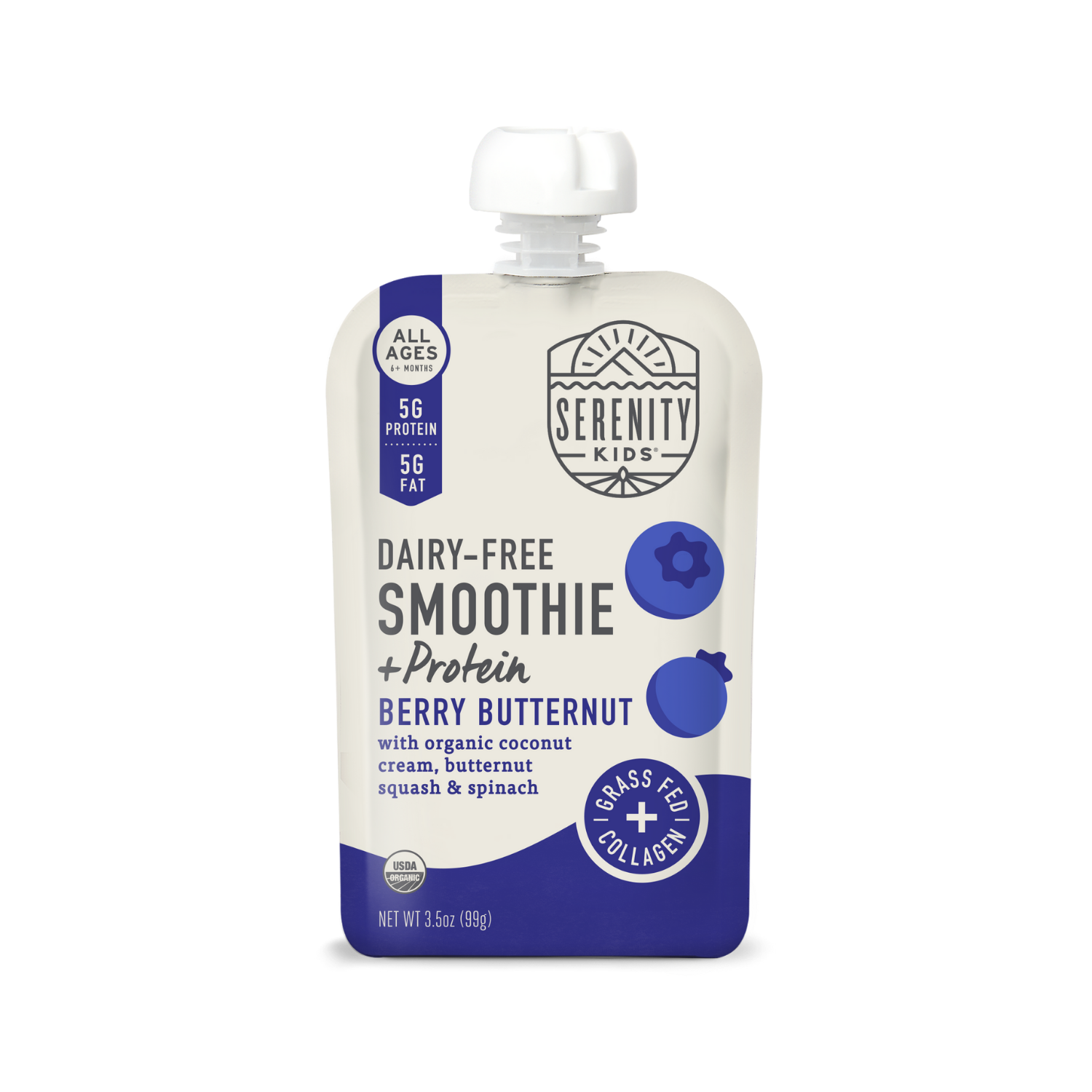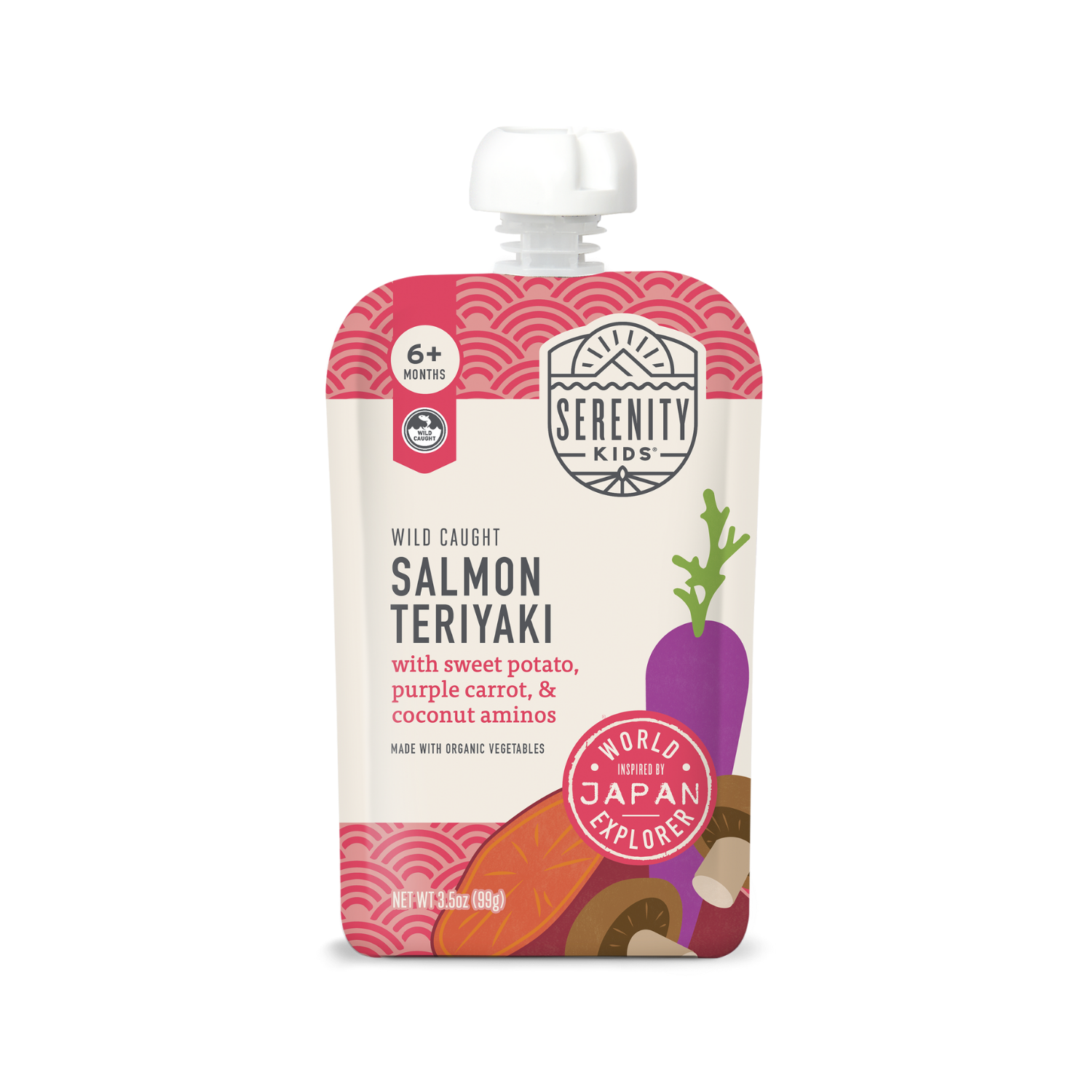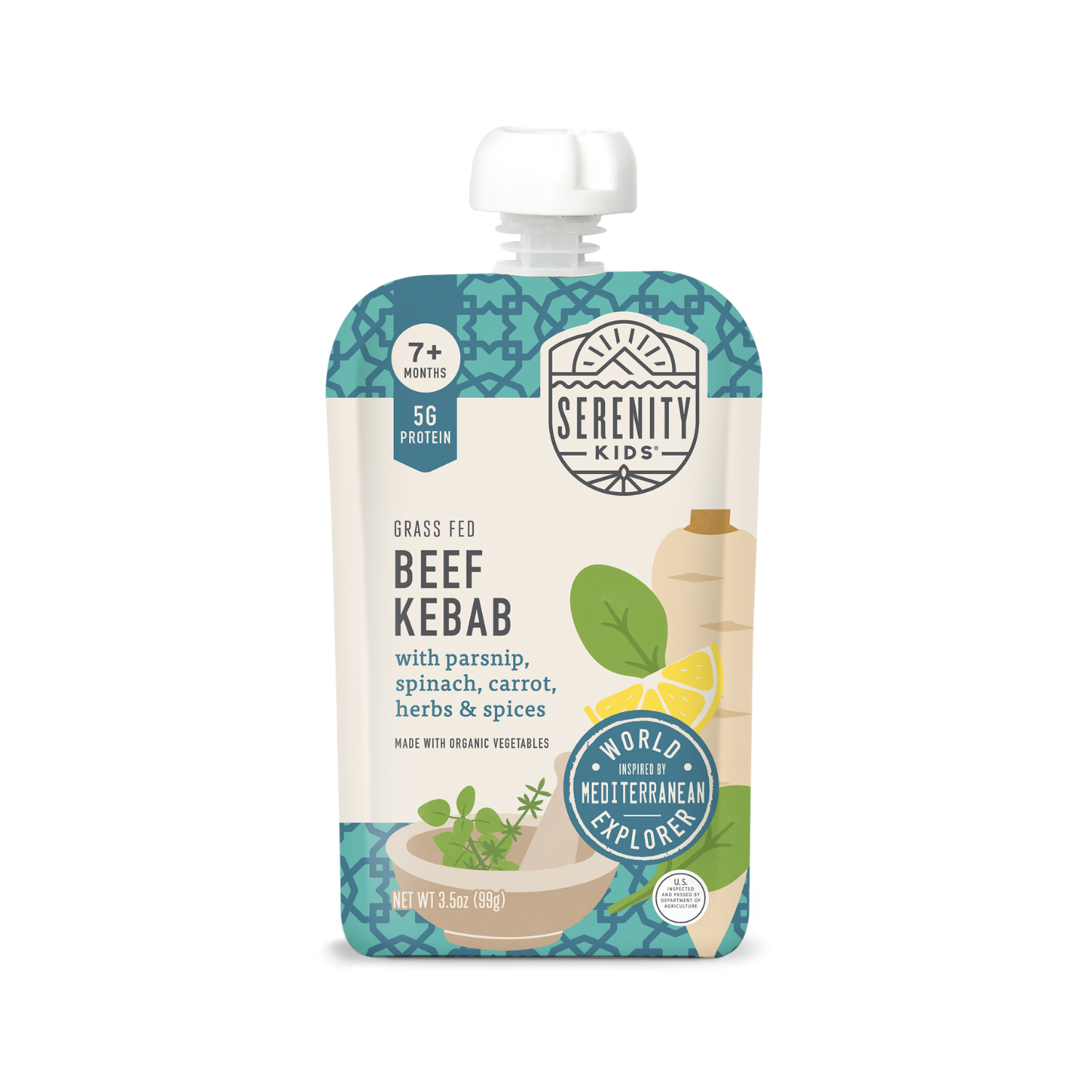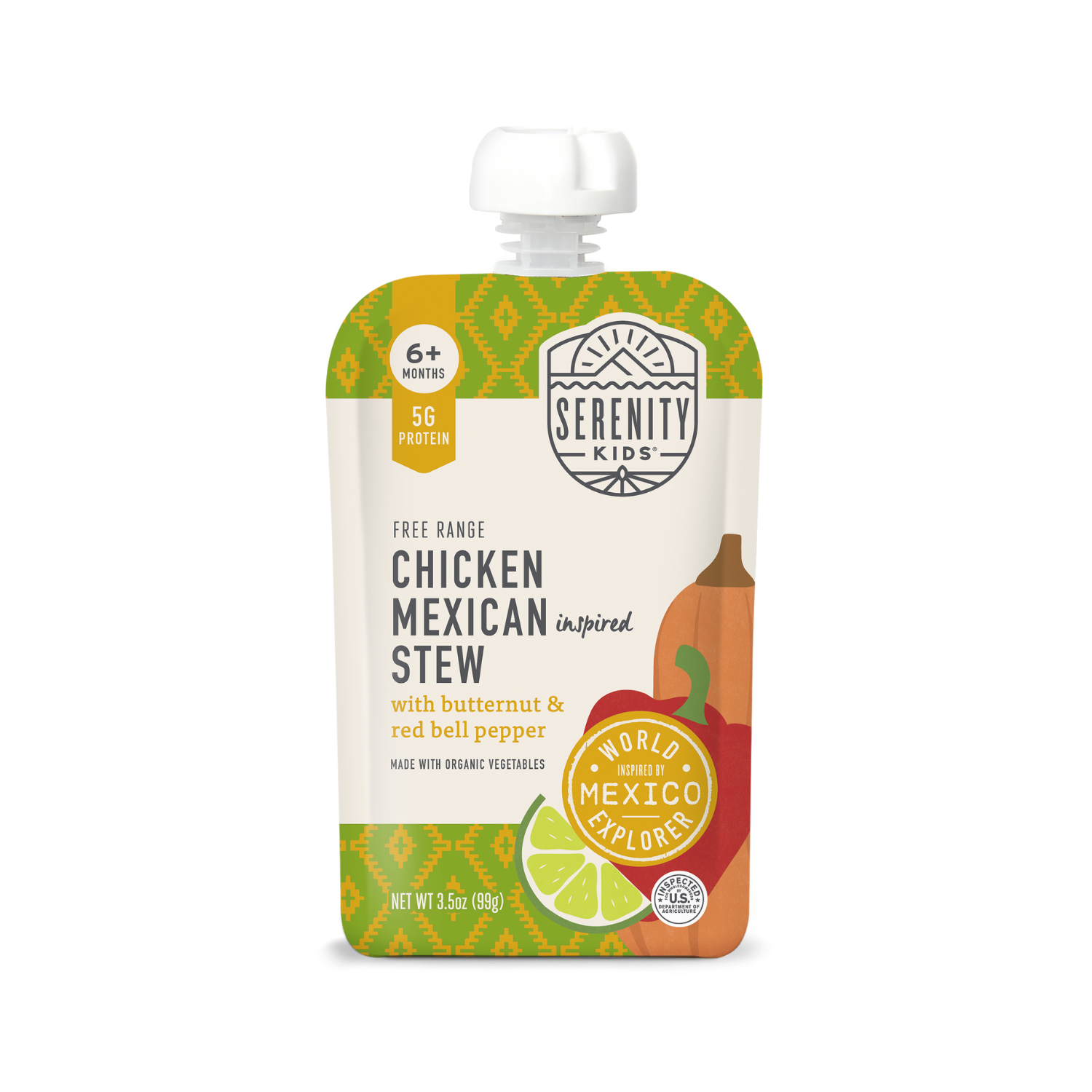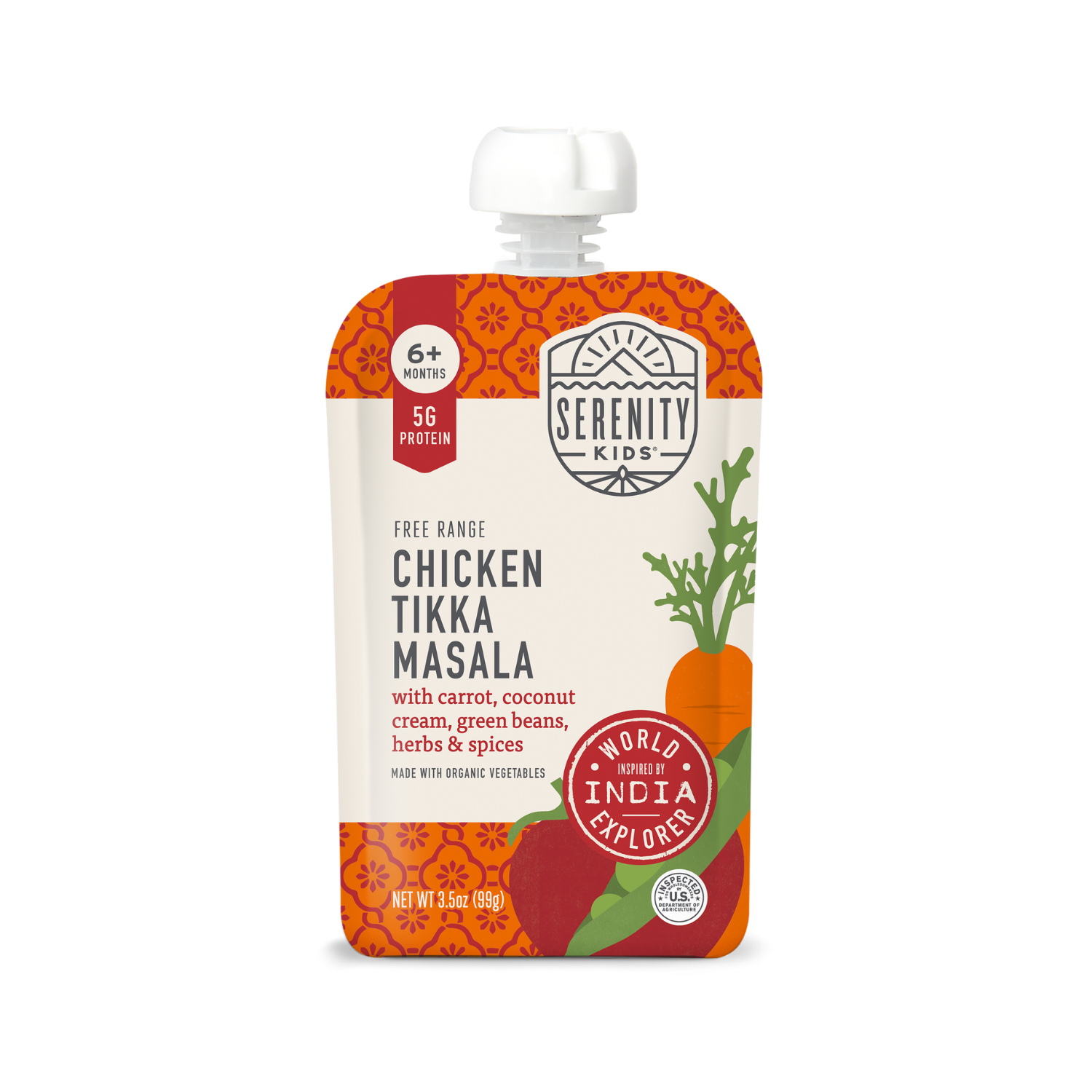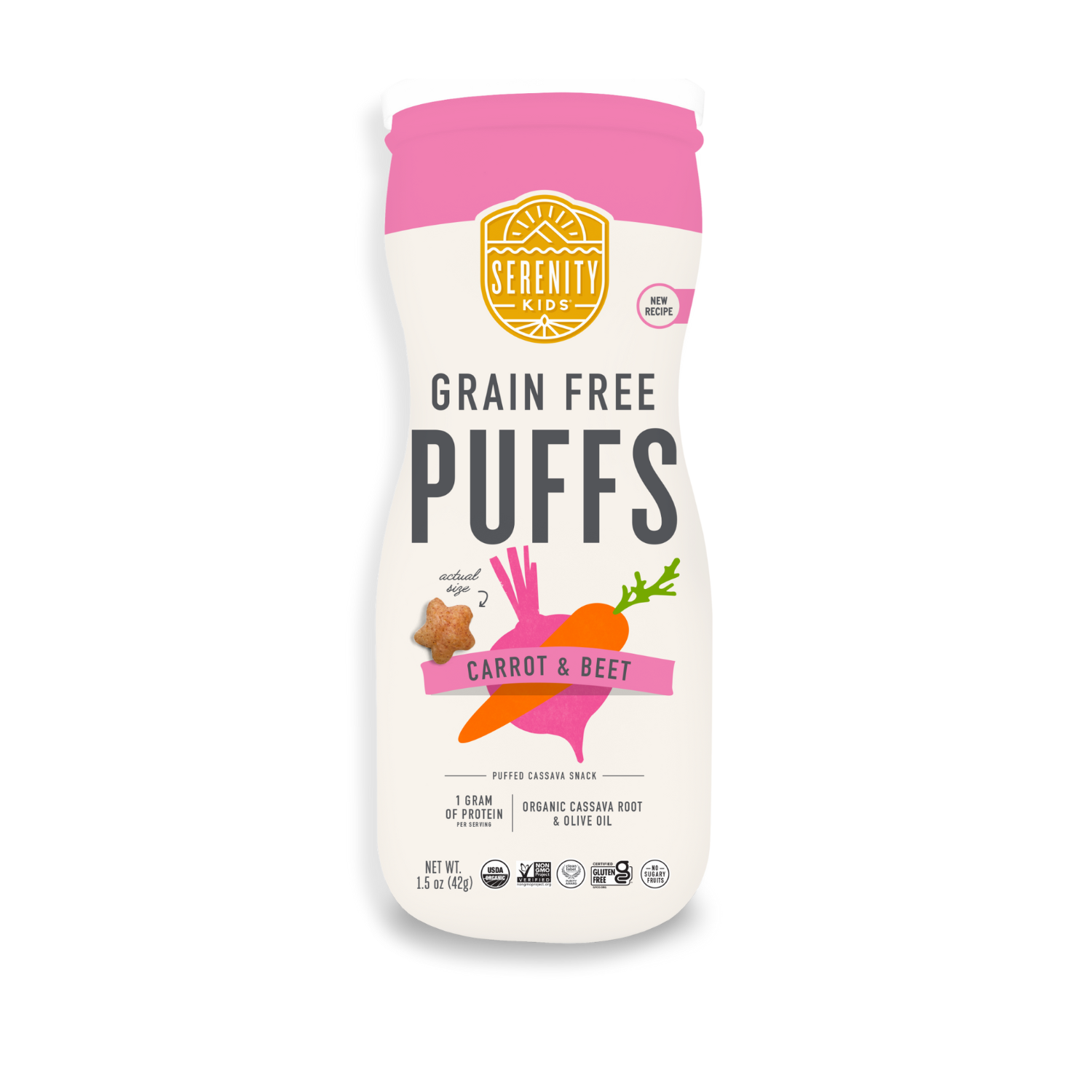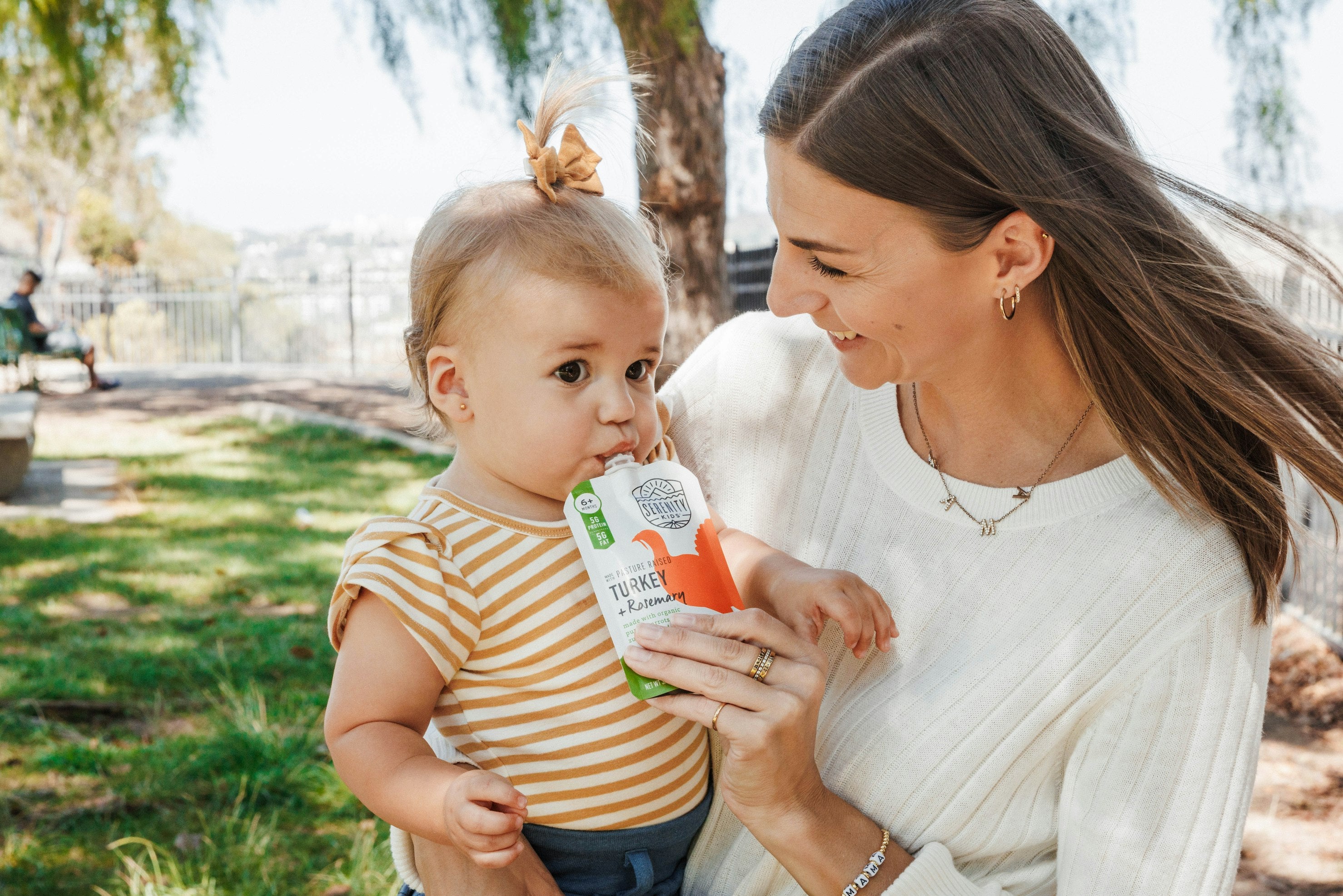By: Hillary Bennetts
As the parent of a little one, chances are, you’ve made your way down the baby food aisle of your grocery store. Maybe you’ve also compared different brands online and scoped out some of the services that will deliver baby food to your doorstep. You probably quickly realized that there are a dizzying number of options available. But whether shelf-stable or refrigerated, organic or not, or packaged in a jar or a pouch, most of the baby food available has one thing in common — its primary ingredient is fruit.

Baby food is designed this way for a reason. Food manufacturers want to make highly-palatable food to keep buyers coming back for more. And just like many adults, babies like sweet tastes. In fact, studies have shown that infants are biologically wired to prefer sweet tastes, and those tastes are further developed through consumption of breastmilk and/or formula for the first several months of life. Breast milk is naturally a little sweet and encourages infants to latch onto their mother and get the nutrition necessary to grow and develop at a rapid rate. For the same reasons, formula is designed to mimic the taste and nutrition of breast milk.

But just because babies prefer sweet tastes doesn’t mean that they need to consume high-sugar foods when introducing solids. And the good news is, you don’t have to use sweet as the default. Studies have shown that taste preferences are malleable and develop in response to a number of social and environmental factors. In other words, babies exposed to a variety of foods can learn to like more complex and unique flavors, like bitter and sour.
Unfortunately, most commercial foods are not developed to support expanding the palate of your little one. A 2015 study by the University of Glasgow found that commercial baby foods use predominantly fruit and sweet vegetables, and that this lack of variety is unlikely to promote the development of bitter tastes in youngsters. The study looked at over 300 commercial baby foods from a variety of brands such as Organix, Heinz, Ella’s Kitchen, and Plum Baby, and found that not only were fruits more predominant and green vegetables rarely used, but also that fruit juice (which is discouraged by the American Academy of Pediatrics) was added to 18% of products. The study authors acknowledge that “taste learning requires parents to introduce their children to less palatable bitter tastes and keep offering them, however, it is probably unrealistic to expect commercial products to assist in this process.”
While fruit can be paired with veggies to increase palatability and introduce more bitter tastes, too much fruit will completely mask the tastes that you are trying to introduce and defeat the purpose of the introduction. Of course, a child will still reap the nutritional benefits of the vegetables when paired with any type or amount of fruit, but this approach simply reinforces the preference for sweet tastes. Pairing bitter flavors with a small amount of lower sugar and highly nutritious fruits such as blueberries or nutritious slow-burning complex carbohydrates such as squash is ideal, as it exposes a child to the new flavor without an overwhelming amount of sugar.
But don’t worry if you’re little one seems to reject those bitter flavors at first. Do your best to brush off that sour face staring back at you and keep trying! Multiple studies have shown that repeated exposure is needed. A study published in the Annals of Nutrition and Medicine titled “Flavor Perception and Preference Development in Human Infants” reviewed multiple studies on the topic and observed that 8-10 exposures to the taste of a new or novel food were needed in order to increase acceptance of it. Another study on the early influences of food preferences suggests a more broad range of 6-15 exposures.

And if you are wondering if your persistence is worth it, know that these early taste experiences set the foundation for food preference development throughout the child’s lifetime. Strong correlations have been found between food preferences during early childhood and later in life. In fact, one study that examined the preference for sweet solutions versus water in infants found that while at birth all of the infants preferred sweet solutions to water, by six months of age, the preference for sweetened water was linked to the infants’ dietary experience. Infants who were routinely fed sweetened water by their mothers showed a greater preference for it than did infants who were not. The study suggested that offering complementary foods without added sugars is not only advisable for short-term health but also to set the infant’s threshold for sweet tastes later in life.
The importance of exposing your child to a variety of tastes and an array of important nutrients combined with the lack of healthy lower sugar options on the market was the inspiration for Serenity Kids. Their shelf-stable pouches contain no fruit — just organic vegetables, responsibly-raised meat, and healthy fats. They are crafted to perfectly pair more bitter flavors like spinach and kale with milder flavors like sweet potato. The result is an incredibly nutrient-dense and delicious baby food.
Of course, you can always make your own baby food, (and I encourage you to do so!) but when life gets busy, when you’re traveling, when your kid is fussy, homemade may not happen. And when that is the case, you can feel good knowing that you don’t have to compromise quality for convenience with Serenity Kids.
Citations:
American Academy of Pediatrics Recommends No Fruit Juice For Children Under 1 Year. (2017, May 22). Retrieved from https://www.aap.org/en-us/about-the-aap/aap-press-room/Pages/American-Academy-of-Pediatrics-Recommends-No-Fruit-Juice-For-Children-Under-1-Year.aspx
Cosmi, V. D., Scaglioni, S., & Agostoni, C. (2017). Early Taste Experiences and Later Food Choices. Nutrients,9(2), 107. doi:10.3390/nu9020107
Early Influences on the Development of Food Preferences. (2013, May 06). Retrieved from https://www.sciencedirect.com/science/article/pii/S096098221300208X
Forestell, C. A. (2017). Flavor Perception and Preference Development in Human Infants. Annals of Nutrition and Metabolism,70(3), 17-25. doi:10.1159/000478759
Garcia, A. L., Mclean, K., & Wright, C. M. (2015). Types of fruits and vegetables used in commercial baby foods and their contribution to sugar content. Maternal & Child Nutrition,12(4), 838-847. doi:10.1111/mcn.12208
Garcia, A. L., Mclean, K., & Wright, C. M. (2015). Types of fruits and vegetables used in commercial baby foods and their contribution to sugar content. Maternal & Child Nutrition,12(4), 838-847. doi:10.1111/mcn.12208
Ventura, A., & Worobey, J. (2013). Early Influences on the Development of Food Preferences. Current Biology,23(9). doi:10.1016/j.cub.2013.02.037
 Hillary Bennetts is the founder and owner of Purposeful Plate Nutrition. A member of the National Association of Nutrition Professionals, she provides nutrition consulting services to individuals and businesses. Hillary holds a BA in Economics from Washington and Jefferson College, an MBA from Emory University, and an NC from Bauman College. A marathoner, mountain climber, and mama, she lives in Colorado with her husband, son, and golden retriever.
Hillary Bennetts is the founder and owner of Purposeful Plate Nutrition. A member of the National Association of Nutrition Professionals, she provides nutrition consulting services to individuals and businesses. Hillary holds a BA in Economics from Washington and Jefferson College, an MBA from Emory University, and an NC from Bauman College. A marathoner, mountain climber, and mama, she lives in Colorado with her husband, son, and golden retriever.



